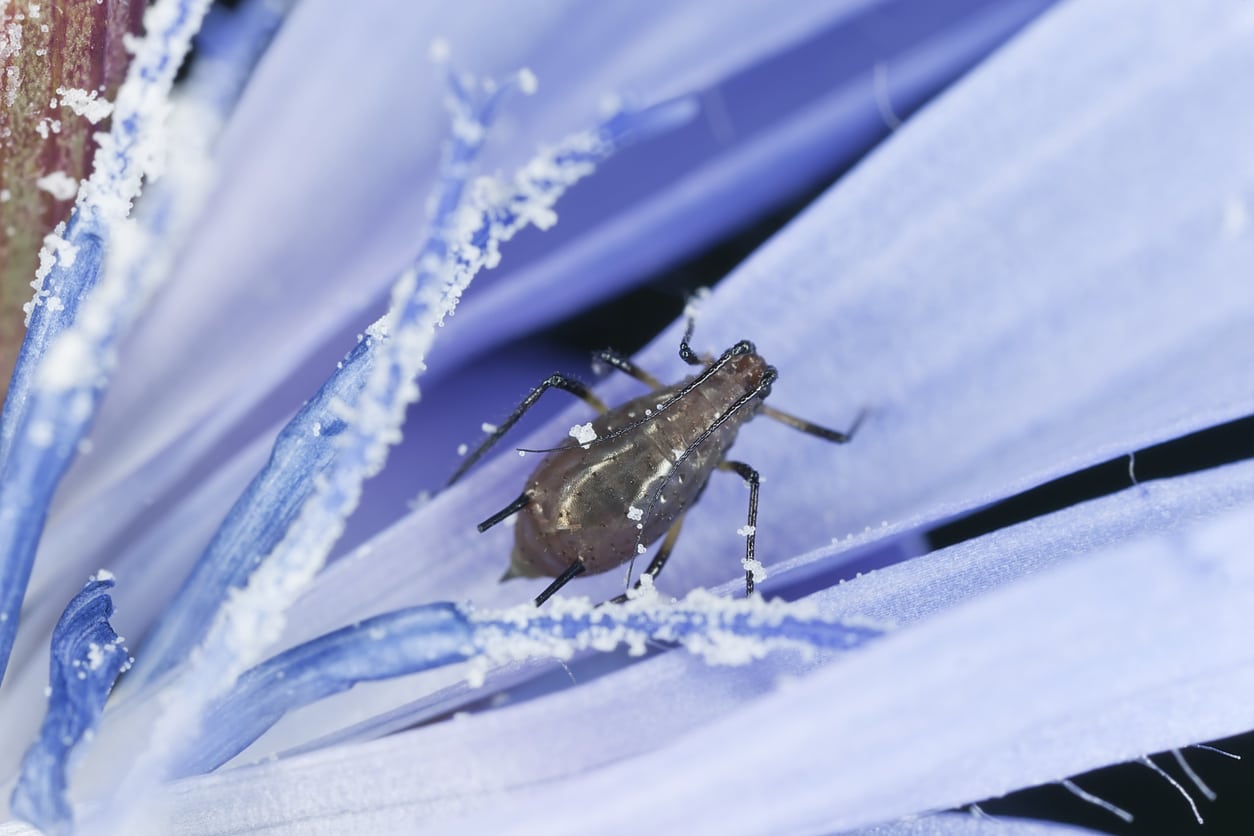Chicory Pest Problems – How To Deter Pests Of Chicory Plants


Chicory, easily recognized by its dandelion-like leaves and bright, periwinkle blue blooms, grows wild across much of the United States. The long taproots have an important role to play in the environment, promoting soil health as they break up hard, compacted ground. This versatile herb is often incorporated into salads, while the long roots are eaten like carrots or parsnips, or ground for use as a coffee substitute. Although chicory is easy to grow, it is sometimes plagued by certain chicory insects and chicory plant pests. Read on for information about a few of the most common chicory pest problems.
Chicory Pest Problems
Below are some of the more common pests and bugs that eat chicory plants: Slugs – Slugs are number one when it comes to pests of chicory because they chew raggedy holes in the leaves. It’s easy to tell when slugs have been around because they leave a slimy, silvery trail in their wake. There are a number of ways to control slugs, including either toxic or non-toxic slug baits. Keep the area free of debris and other slug hiding places. Limit mulch to 3 inches (7.5 cm.) or less. If the numbers are small, you can pick the pests off by hand in the evening or early morning. You can also surround the chicory plant with diatomaceous earth, which abrades slimy, slug bellies. Homemade traps may be helpful too. Aphids – Aphids are tiny, sucking pests, frequently found feeding in large numbers on the underside of chicory leaves, which eventually become crinkled and curled. The pests leave a sweet, sticky substance that draws hordes of ants and may attract sooty mold. If not controlled, aphids can eventually weaken and destroy a plant. A light infestation of aphids can often be removed by a strong blast of water. Otherwise, insecticidal soap sprays are effective, but may require several applications to control a severe infestation. Cabbage worms and loopers – Cabbage loopers are pale green caterpillars with white lines along the sides of their bodies. The pests are easily identified by the way they arch their body as they travel down chicory leaves, and by the holes they chew in the foliage. Damage can be significant. Birds usually do a good job at keeping the pests in check. You can also remove the pests by hand. Otherwise, Bt (Bacillus thuringiensis) is a naturally occurring bacteria that kills caterpillars and similar chicory insects by damaging the cell membranes. Thrips – Thrips are tiny, narrow insects that suck the sweet juices from chicory plant leaves. As they feed, they leave silvery specks or streaks and distorted leaves, and can significantly weaken a plant if left untreated. Thrips may also transmit harmful plant viruses. Like aphids, thrips are easily treated with insecticidal soap spray. Leaf miners – Leaf miners are easily spotted by the thin, white trails and blotches they leave on chicory foliage. A serious infestation can cause leaves to drop from the plant. Leaf miners are difficult to control because for most of their lives the tiny pests are protected by the leaves. Avoid pesticides because the toxins will kill beneficial insects that keep these pests in check. Instead, consider purchasing parasitic wasps and other insects that feed on leaf miners.
Sign up for the Gardening Know How newsletter today and receive a free copy of our e-book "How to Grow Delicious Tomatoes".

A Credentialed Garden Writer, Mary H. Dyer was with Gardening Know How in the very beginning, publishing articles as early as 2007.